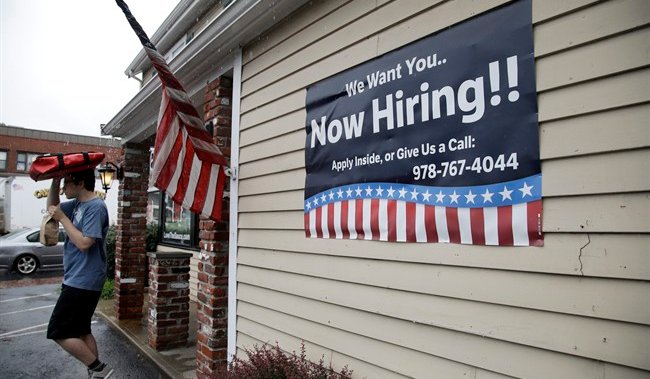U.S. job growth accelerated in June as companies, desperate to boost production and services amid booming demand, raised wages and offered incentives to draw millions of reluctant unemployed Americans back into the labor force.
Nonfarm payrolls increased by 850,000 jobs last month after rising 583,000 in May, the Labor Department said in its closely watched employment report on Friday. The unemployment rate rose to 5.9% from 5.8% in May.
Read more:
130 countries back global minimum corporate tax of 15%
The jobless rate has been understated by people misclassifying themselves as being “employed but absent from work.” There are a record 9.3 million job openings. Economists polled by Reuters had forecast payrolls advancing by 700,000 jobs last month and the unemployment rate dipping to 5.7%.

Average hourly earnings rose 0.3% last month after increasing 0.4% in May. That raised the year-on-year increase in wages to 3.6% from 1.9% in May. Annual wage growth was in part flattered by so-called base effects following a big drop last June.
The report suggested the economy closed the second quarter with strong growth momentum, following a reopening made possible by vaccinations against COVID-19. More than 150 million people are fully immunized, leading to pandemic-related restrictions on businesses and mask mandates being lifted.
Read more:
‘Half of restaurants still at risk’: Small businesses warn Ottawa despite new hiring subsidy
Politicians, businesses and some economists have blamed enhanced unemployment benefits, including a $300 weekly check from the government, for the labor crunch. Lack of affordable child care and fears of contracting the coronavirus have also been blamed for keeping workers, mostly women, at home.
There have also been pandemic-related retirements as well as career changes. Economists generally expect the labor supply squeeze to ease in the fall as schools reopen and the government-funded unemployment benefits lapse but caution many unemployed will probably never return to work.

Record-high stock prices and surging home values have also encouraged early retirements.
According to job search engine Indeed, 4.1% of jobs postings advertised hiring incentives through the seven days ending June 18, more than double the 1.8% share in the week ending July 1, 2020. The incentives, which included signing bonuses, retention bonuses or one-time cash payments on being hired, ranged from as low as $100 to as high as $30,000 in the month ended June 18.
Read more:
COVID-19: Manitoba offers wage subsidy to encourage hiring vaccinated employees
Some restaurant jobs are paying as much as $27 per hour plus tips, according to postings on Poachedjobs.com, a national job board for the restaurant/hospitality industry. The federal minimum wage is $7.25 per hour, but is higher in some states.
With employment not expected to return to its pre-pandemic level until sometime in 2022, rising wages are unlikely to worry Federal Reserve officials even as inflation is heating up because of supply constraints. Fed Chair Jerome Powell has repeatedly stated he expects high inflation will be transitory.
The U.S. central bank last month opened talks on how to end its crisis-era massive bond-buying














































